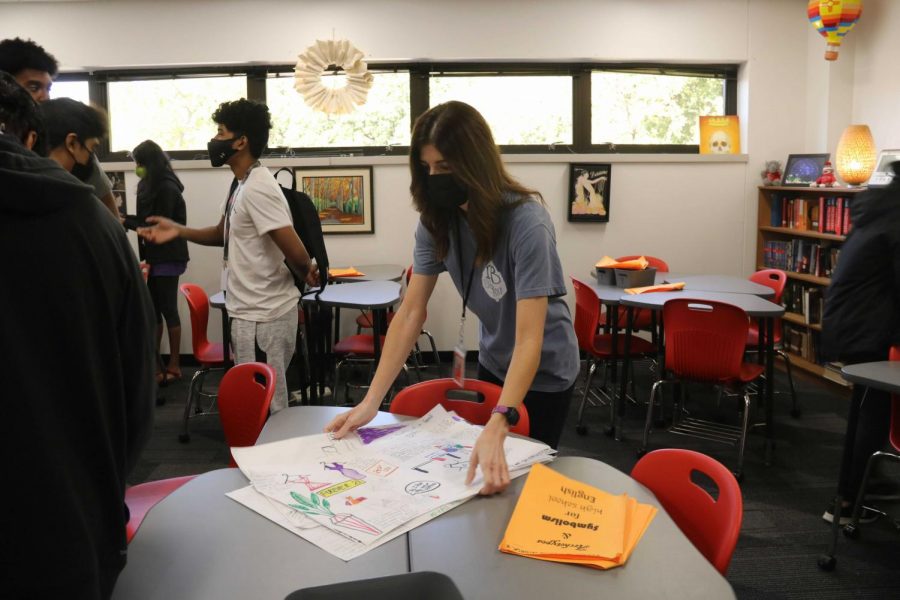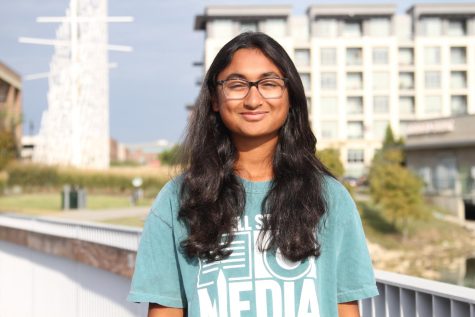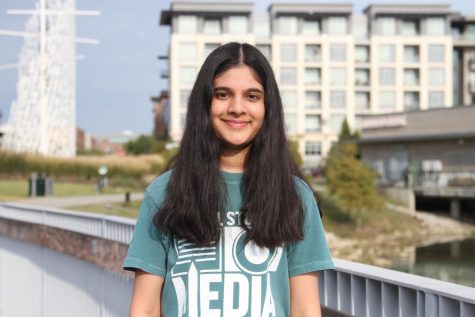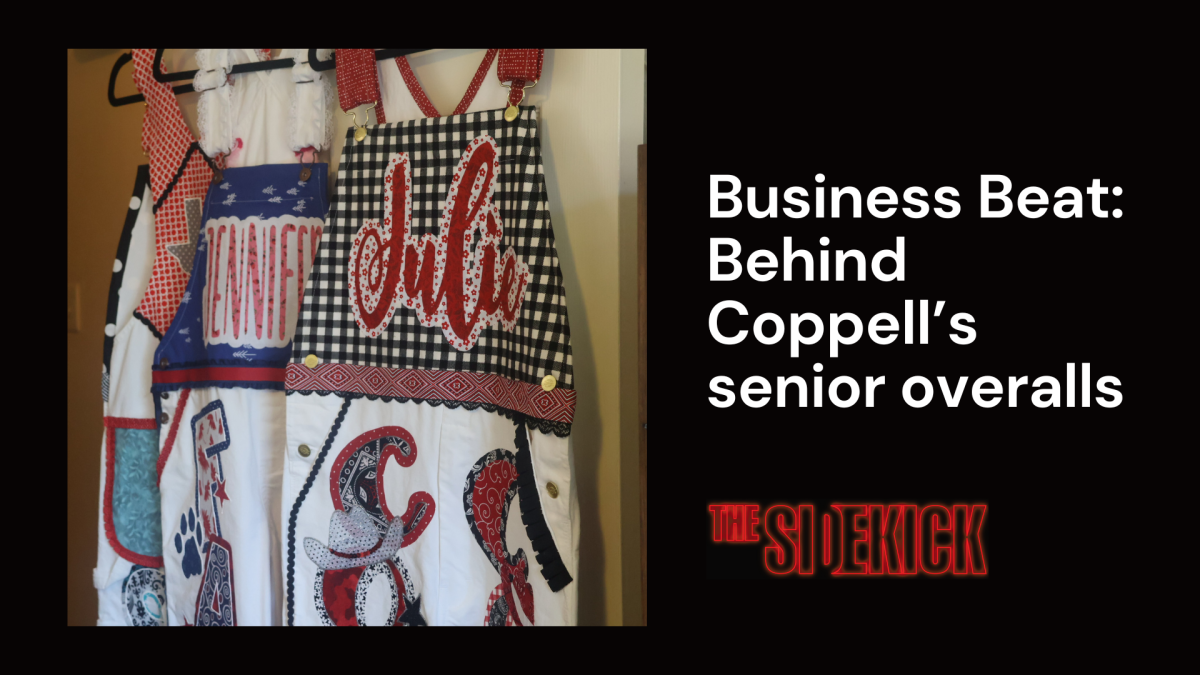Into classrooms, out of routine
Teachers across Coppell readjust to in-person learning
Coppell High School IB English III teacher Stephanie Spaete collects her students’ posters at the end of seventh period on Monday. Like many Coppell ISD educators, Spaete has adjusted some of her teaching strategies based on her virtual teaching experiences of the past year. Photo by Meghna Kulkarni
October 7, 2021
Editor’s Note: This story has been updated from its original version.
As Cottonwood Creek Elementary librarian Cynthia Alaniz rolled her ‘bookmobile’ down the elementary school hallways, ready to deliver joy through her decorated mobile library, thrilled elementary students gave her a round of applause.
Cottonwood Creek’s library services were limited during the 2020-21 school year, but Alaniz didn’t let that stop her.
“I wanted to communicate to our school community that I was still there to support them in their learning, no matter if the physical library space was closed,” Alaniz said.
Alaniz began Zoom sessions, Flipgrid book talks and choice boards. She changed the book delivery system and devised a system of curbside library book pickup for virtual learners, recognizing that change was needed to keep the library and all of its services to Cottonwood Creek Elementary students the same.
Coppell is almost two years into the pandemic, several months from a mostly online school year and nine weeks into an in-person one. Changes, such as those made by Alaniz, continue throughout CISD schools.
“I am relying on Schoology more than in the past, for grading and communication,” Coppell Middle School North history teacher Julie Bottom said. “[My students] feel more confident with online tools. In the past when I’ve talked to students about online [applications] like Notability or Pages, there were a lot of questions. Now, I feel like students are pretty savvy when it comes to technology.”
The eighth grade U.S. history team at CMS North balanced technology usage for in-person and virtual students by requiring both to complete the same activities.
“[It] was the only way we could really be fair,” Bottom said. “We didn’t want the kids who were at home to feel like they were missing out.”
Some changes made on account of accommodations for virtual learners have remained, even after students have returned to the traditional classroom. Alaniz still wants to continue the choice boards and book giveaways that began last school year. Bottom plans to incorporate more written and creative assignments into the curriculum.
Coppell High School IB English teacher Stephanie Spaete has learned more about her students.
“[Virtual learning] made me realize that not everyone is comfortable talking, and seeing a different approach was encouraging,” Spaete said. “[The class] was still about the content, but it was more about knowing my students and knowing what made them excited. Like anything else, you learn to adjust.”
Spaete’s IB English class is a predominately discussion-based course. She only had 10 in-person students during the 2020-21 school year. Spaete had to adjust to not being able to see and hear the expressions and voices of her students. Then, she had to adjust once again in time for the 2021-22 school year.
Student-teacher collaboration is leading the way in terms of speeding up adjustment across Coppell.
“Zoom helped – it definitely made a difference to be able to communicate with [students], but it was not the same as when you were in class,” Bottom said. “Now almost all students are in-person, the connections [between teachers and students] have gotten better.”
Virtual schooling exemplified the importance of being able to ask questions, provide feedback and have fun in the classroom through the distance and fatigue that came with being parked in front of a screen at home, However, it also revealed valuable truths to carry into the future classroom experience.
“Last year was an adjustment online, and now it’s a different type of adjustment, trying to relearn how to interact with people,” Spaete said. “That’s what we’re all trying to figure out again.”
Follow Saniya Koppikar (@SaniyaKoppikar) and @CHSCampusNews on Twitter.











